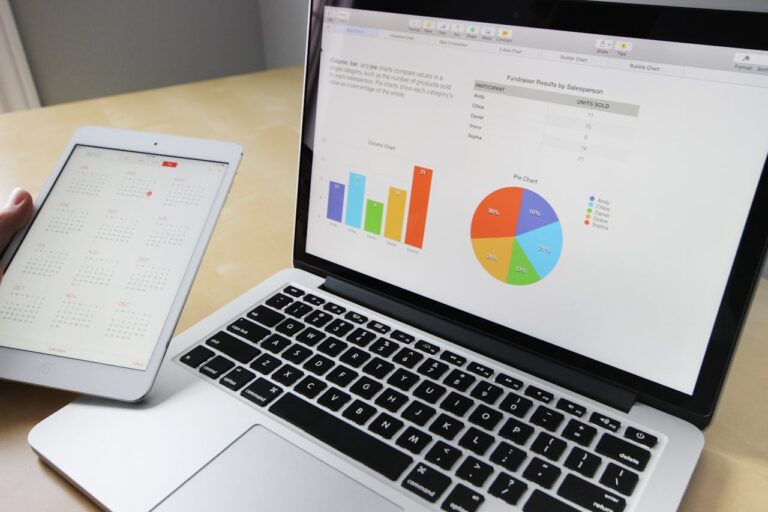
Introduction to Tableau
In the dynamic landscape of data analytics, Tableau has emerged as a transformative tool, revolutionizing the way organizations visualize and interpret data. With its intuitive interface and powerful capabilities, Tableau has become synonymous with data democratization and informed decision-making across industries. Let’s delve deeper into what Tableau is and explore its myriad applications.
What is Tableau?
Tableau is a leading data visualization and analytics platform that enables users to transform raw data into actionable insights through interactive dashboards and visualizations.
Founded in 2003 by Chris Stolte, Christian Chabot, and Pat Hanrahan, Tableau has rapidly gained popularity for its user-friendly interface and robust features, catering to a diverse range of users, from data analysts and business professionals to data scientists and executives.
At its core, Tableau simplifies the process of data exploration and analysis by allowing users to connect to various data sources, including spreadsheets, databases, cloud services, and more. Once connected, users can create dynamic visualizations, such as charts, graphs, maps, and dashboards, to uncover patterns, trends, and insights within their data.
Key Features of Tableau
Tableau offers a plethora of features that empower users to unlock the full potential of their data. Some of the key features include:
1. Drag-and-Drop Interface: Tableau’s intuitive drag-and-drop interface makes it easy for users to create visually appealing dashboards and visualizations without the need for extensive coding or technical expertise.
2. Interactive Visualizations: With Tableau, users can build interactive visualizations that allow for dynamic exploration and analysis of data. From filtering and sorting to drilling down into specific data points, Tableau offers unparalleled interactivity for deeper insights.
3. Data Blending and Integration: Tableau seamlessly integrates with a wide range of data sources, allowing users to blend and combine data from multiple sources for comprehensive analysis. Whether it’s structured or unstructured data, Tableau provides the flexibility to work with diverse datasets.
4. Advanced Analytics: Tableau goes beyond basic visualization to offer advanced analytics capabilities, including predictive analytics, statistical modeling, and forecasting. With built-in analytical functions and integrations with statistical tools, Tableau enables users to uncover predictive insights and trends.
5. Real-Time Data Updates: Tableau’s live data connections and real-time data updates ensure that users have access to the latest information for timely decision-making. Whether it’s streaming data from IoT devices or live feeds from social media platforms, Tableau keeps users informed with up-to-date data.
Applications of Tableau
Tableau finds applications across various industries and functions, empowering organizations to leverage data-driven insights for improved decision-making, operational efficiency, and business growth. Some of the key applications of Tableau include:
1. Business Intelligence and Reporting: Tableau is widely used for business intelligence and reporting purposes, allowing organizations to visualize key performance indicators (KPIs), track business metrics, and generate insightful reports. From sales analytics and financial reporting to customer segmentation and market analysis, Tableau provides the tools to drive data-driven decision-making.
2. Data Visualization and Exploration: Tableau’s powerful visualization capabilities make it an ideal tool for data exploration and analysis. Whether it’s identifying trends in sales data, analyzing customer behavior, or exploring geographic patterns, Tableau enables users to visualize data in meaningful ways to gain actionable insights.
3. Financial Analysis and Planning: In the finance industry, Tableau is used for financial analysis, budgeting, and forecasting. Finance professionals can use Tableau to analyze revenue trends, track expenses, and perform scenario analysis to support strategic financial planning and decision-making.
4. Healthcare Analytics: Tableau is increasingly being used in the healthcare industry for analytics and reporting purposes. Healthcare organizations utilize Tableau to analyze patient data, track clinical outcomes, and improve operational efficiency. From population health management to patient satisfaction analysis, Tableau helps healthcare providers optimize patient care and outcomes.
5. Supply Chain Optimization: Tableau plays a crucial role in supply chain management by providing visibility into key supply chain metrics, such as inventory levels, order fulfillment rates, and supplier performance. With Tableau, organizations can identify bottlenecks, optimize inventory levels, and improve supply chain efficiency.
In conclusion, Tableau is a powerful tool for data visualization and analytics that empowers organizations to unlock insights from their data and drive informed decision-making. With its intuitive interface, advanced features, and versatile applications, Tableau continues to be at the forefront of the data analytics revolution, helping organizations harness the power of data to achieve their business objectives.
